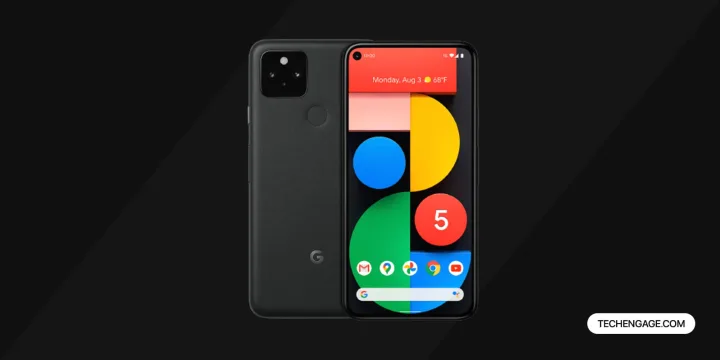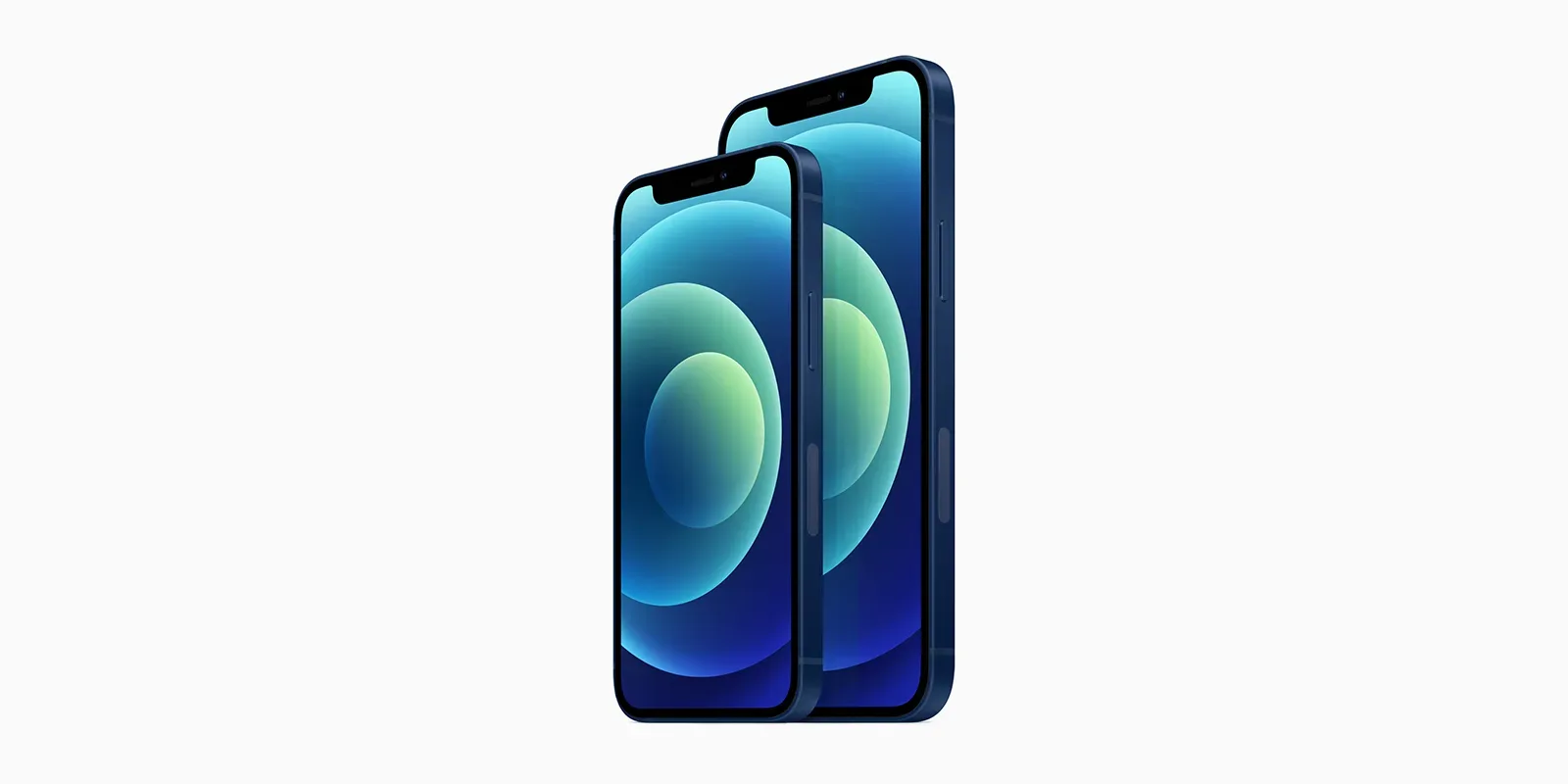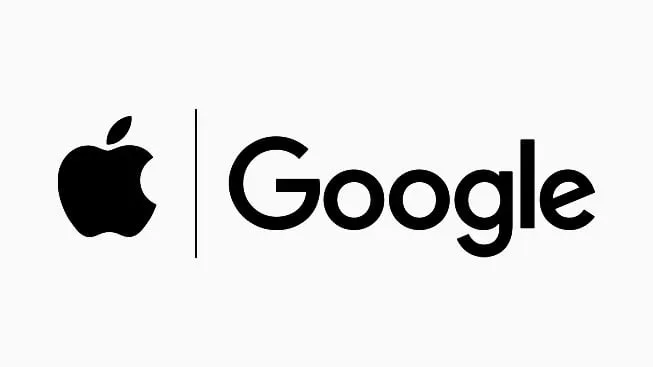The Google Pixel 5 is certainly one of the most interesting phones to come out from Google in the last few years. It represents a departure from what Google’s flagships used to be. Before the Pixel 5, the expectation was that the non-‘a’ Pixel phone would be the best and greatest Google had to offer and aimed to compete with the Samsung S series and the premium iPhones of the land.
But, with this generation, Google has taken an entirely different direction. First of all, they dropped the price to $699, away from the $800+ flagship territory. They swapped out a flagship Snapdragon 800 series processor for the SD 765G chipset, a perfectly capable 5G-enabled processor, but again not a flagship. Google had left the ‘war of the specs’ and instead delivered an upper-midrange phone with impressive, clean software and the same (albeit still phenomenal) camera they’ve been using for years.
Now, this new direction isn’t for everyone. If you’re a power user, you may be turned off by the less than flagship specs. Or perhaps a $700 phone with similar specs to $450 phones doesn’t take your fancy. That’s why we at TechEngage have put together this list of the best alternatives to the Google Pixel 5 on Amazon.
Best Google Pixel 5 alternatives on Amazon
1. iPhone 12
Pros:
- Simple, easy-to-use software
- Great camera
- Great performance
- 5G
Cons:
- 60Hz Display
- iOS
- More expensive than Pixel 5
My first pick for alternatives to one of the most popular Android phones is an iPhone? Right, hear me out, this isn’t as strange of a choice as you may think. The whole vision with the Pixel lineup was for Google to break away from the “power user” geek market (as was the case with the Nexus phones) and tap into the everyday consumers, a market that Apple holds a huge dominance over. In many ways, Google tried to make their version of the iPhone. Simple, streamlined UI? Check. Reliable, great camera? Check. Great video? Almost. Very little in the way of bells and whistles or bloatware? Check. Overpriced? Absolutely.
So here we go, if you’re Google’s target audience and you don’t want a Pixel 5, get an iPhone! Powered by the blisteringly fast Apple A14 Bionic, with its four-core GPU delivering 30% faster GPU performance.
When you’re ready to take some shots, say hello to the two cameras plastered on the back of this bad boy. One standard shooter will give you amazing, crisp, and reliable photos every single time. The ultra-wide lens also received a big upgrade, now rocking night mode for the first time, perfect for group photos in not-so-great lighting.
All in a smooth aluminum casing with a beautiful frosted glass back. No company does build quality as well as Apple does. It’s comfortable and premium feeling in the hand. All that for … well, that’s a little pricey. Some say it would be an Apple tax. But, if you’re in the market for a simple phone that just works and works well, and you can stomach iOS, the iPhone 12 is a compelling alternative to the Pixel 5.
2. Samsung S20 FE
Pros:
- Sub $700
- 120Hz FHD AMOLED Display
- 5G
Cons:
- Average battery life
- Plastic build
Released in the latter half of 2020 and billed as the lower-cost younger brother of the Samsung S20 5G that came before it, the S20 FE is one of the kings of the upper-midrange of smartphones. Using the same guts as its flagship relative, the main cost-savings come in the form of the display and the build.
First up, we’ve got a downgrade in the display for a QHD panel to an FHD panel but retains the stellar 120Hz mode from the S20. Honestly, this isn’t that bad of a downgrade as on the flagship phone; the display was locked to 1080p if you wanted to use the high refresh rate mode to save battery life. I’d take 120Hz over 1440p any day, and Samsung agrees; as for their latest flagship, the S21, they switched out the panel for this 1080p one anyway.
The Samsung Galaxy S20 FE features high-powered pro lenses for beautiful portraits, stunning landscapes, and crisp close-ups in any light with its 3X optical zoom. Samsung doesn’t subscribe to Google’s mantra of less is more and includes three cameras on the back of this phone. The main shooter is excellent, taking vivid, detailed, and accurate photos and stellar video. The ultra-wide is passable, good enough if you need to get a large group in a picture. The 3X telephoto camera is pure garbage and exists for pure marketing; I don’t see anyone using this.
With a list price of $369.00, the S20 FE slots itself neatly into the same segment of the market as the Pixel 5, and some argue that its similarity to the Galaxy S20 5G makes it a more compelling option.
3. OnePlus 8 Pro
$.... (Product detail is unavailable temporarily)Pros:
- 90Hz Display
- Flagship Specs
- 5G
- Big Battery
Cons:
- No wireless charging
- Macro camera is a waste of space (and money)
OnePlus have come a long way from their “flagship killer” origins with their impossibly well-priced OnePlus One, but the OnePlus 8 by no means drops the ball when it comes to their insane value of price to performance.
The OnePlus 8 is powered by the Snapdragon 835, bringing 5G connectivity and great gaming and multi-tasking performance for not a lot of money at all. The OnePlus 8 does deliver cost savers in gutting wireless charging, removing the innovative pop-up camera from the OnePlus 7 line-up, but I’d imagine most consumers won’t miss these at all.
The 48MP main camera on the back of this OnePlus 8, unlike previous OnePlus phones, is great. We’re glad OnePlus didn’t opt for a telephoto camera and instead went for an ultra-wide lens that sacrifices the sharpness of the main sensor for the ability to get more in the frame. The 2MP macro camera, on the other hand, is terrible, it’s low resolution, doesn’t focus that well and photos look awfully soft and washed out. Yuck. We’d much rather they’d taken this camera out and dropped the price a little.
Propped up by OnePlus’s classically excellent 30W Warp Charger in the box bringing great fast charging, the FHD AMOLED display looking brilliant with vibrant colors and good-looking smooth motion with their 90Hz high refresh rate mode, the OnePlus 8 has all the flagship specs you’d expect from a late 2020 top of the range phone.
But, at $.... (Product detail is unavailable temporarily), the OnePlus 8 is priced significantly lower than its flagship counterparts. Compared to the Google Pixel 5, the OnePlus comes with all specs blazing, and whilst the camera isn’t as excellent as the Pixel’s, the OnePlus 8 makes it up in performance and affordability.
4. Google Pixel 4a with 5G
Pros:
- Affordable
- OLED Display
- 5G
- Headphone Jack (!)
Cons:
- Mid-range chipset
- 60Hz
The Pixel 4a 5G is more of a Pixel 5 ‘lite’ than it is an upgraded version of the Pixel 4a. Released at the same time as the Pixel 5, Google offers an enticing value option for anyone looking for a 5G connectivity at an affordable price.
Powered by the same SD processor as the Pixel 5, the 4a 5G is a little slower than phones like the OnePlus 8, but the slight sluggishness is less noticeable on this cheaper phone than the Pixel 5 as this display tops out at 60Hz.
The only downgrades I can see between this and the Pixel 5 is the lack of wireless charging (not a big deal if you don’t already have wireless chargers) and the 60Hz screen. The lack of a high refresh rate screen is a little disappointing, but for nearly $200 less than the Pixel 5, I would trade that for the lower price.
The camera on this phone trumps anything else in its price range, using the same dual-camera setup as the Pixel 5. The main 12MP sensor may look inferior to the likes of the OnePlus 8 and Nord on paper with its low megapixel count, but Google’s excellent image processing makes this main camera absolutely shine. Photos on the 4a 5G are just as crisp and just as vibrant as the Pixel 5.
With a list price of $184.99, the Pixel 4a with 5G represents some insane value for not a lot of money. With how much more affordable it is than its big brother, this phone is perfect for anyone who wants the Pixel 5 experience without shelling out $700 for it.
5. Samsung Galaxy S21
Pros:
- Great performance
- Great FHD 120Hz AMOLED HDR display
- 5G
Cons:
- No microSD card expansion
- Plastic build
Samsung’s new flagship line-up represents the Korean manufacturer’s change in direction. Gone is the company that would ridicule Apple for never including expandable storage and gutting the headphone jack. With the S21, Samsung has created a phone that no longer targets the power user and is geared fully at poaching disloyal iPhone users.
And for those users, this is an enticing phone. Featuring Samsung’s bright and beautiful 6.2-inch 20:9 AMOLED display, the S21 is a multimedia powerhouse. Rocking HDR 10+ support and coming up to a peak brightness of 1300 nits, movies, TV shows, and photos will look stunning on this phone. The smooth motion of the 120Hz display will convert any disgruntled iOS fan in one fell swoop.
Where Samsung loses their ground, however, is with the downgrades from its predecessor. Samsung users will have to wave goodbye to their beloved headphone jack after last year’s S20 was the first to say goodbye. But, this time round, Samsung also got rid of the microSD card expansion slot and dual-SIM support.
Instead of the stellar shimmering glass and metal construction of the S20, the S21 goes the way of the Note 20 and features a polycarbonate plastic back. It’s less of a sin here than it was on the expensive Note phone, and for the drop in base-price, I’ll somewhat allow it.
The main 12MP f1.8 shooter on the back of this bad boy features a wide 26mm field of view and optical image stabilization (OIS), churning out consistently sharp and vibrant photos. The 64MP telephoto is one of the only telephoto cameras on the market that doesn’t suck, and the ultrawide is again great for group pictures.
With a price on Amazon of is comparatively well-priced aside the Pixel 5 and for specs with its speed, 120Hz display, and Samsung flair, some may be enticed by the Samsung Galaxy S21 over Google’s latest 2020 flagship.
6. iPhone SE
$.... (Product detail is unavailable temporarily)Pros:
- Compact
- Affordable (for iOS)
- Fast
Cons:
- Sub 1080p IPS display
- Average battery life
- One camera
No-one who does less is better than Apple, and no-one does widespread consumer appeal better than Apple. Google’s vision with the Pixel 5 was to drop the price to appeal to the everyday consumer… the Apple consumer. But, in 2020, Apple also released an affordable phone for the layman, the iPhone SE 2020.
Recycling the old but beloved iPhone 8 design first used in the iPhone 6 all the way in 2012, this phone is absolutely tiny compared to the behemoths of the 2021 mobile landscape. The 4.7-inch “Retina” IPS display is perfectly passable, but the sub 1080p resolution, the less than inspiring colors, and the low typical brightness of 600 nits isn’t going to wow anyone.
Neither will the battery life, owing to its tiny 1821mAh battery, though Apple’s efficient processor architecture does stretch to last a full day if you’re careful. But, the appeal of this phone is that it’s the cheapest way to get into the iOS ecosystem. Simply put, if you want an iPhone but don’t have the money for an iPhone 11 or 12 mini, you get an iPhone SE.
This phone shares the blisteringly powerful A13 Bionic with the iPhone 11 Pro family, allowing even the most intensive games to run without a hitch. The single-camera is a 12MP HDR sensor, churning out great photos with ease, but it lacks any sort of ultrawide or telephoto camera. I don’t particularly care that much, and I respect Apple’s direction in that.
If you want an affordable, reliable phone that will just work, the iPhone SE 2020 is perfect for you. Power users like me, however, should stay clear. With a price of $.... (Product detail is unavailable temporarily), this iPhone is certainly affordable, and those in Google’s target audience for the Pixel 5 may be enticed by this value offering from Apple.
7. LG V60 ThinQ
Pros:
- Headphone jack
- 5G
- Dual Screen Case Cover (sold separately)
- HDR OLED panel
- Affordable
Cons:
- Average camera
- 60Hz screen
LG’s flagships over the years have always been uninspired, perfect for anyone who wants a boring phone with just enough features to warrant its high price tag. That changed in 2020, as LG seemed to have found some hard substances and started churning out ridiculous and exciting phones. Their LG Wing phone last year was dumb and stupid, but I appreciate the risks they are taking to bring out somethings that are interesting and fun!
The V60 is a more traditional flagship than the Wing, but it does have one cool feature up its sleeve that could turn your head: the ability to add a second fully featured touch display in the form of a relatively inexpensive case cover that attaches to this phone. This dual-screen phone is perfect for getting work done like typing a keyboard, playing emulated games, and for multi-tasking. There are so many possibilities with this strange piece of tech.
The rest of the phone is perfectly good too. Audiophiles will love the inclusion of a 3.5mm headphone jack, and LG is known for including high-quality DACs in their phones, and the V60 is no exception. The triple camera setup is perfectly passable, with the main shooter churning out decently sharp photos and the ultra-wide doing the job if you need a group picture. The depth sensor is useless, it’s again just marketing.
Setting you back $349.99, the V60 is quite an affordable offering for an innovative, fresh idea. You can bag yourself the second display for , so all in all, this isn’t a lot for a unique mobile experience.
8. Motorola Edge
Pros:
- Stunning display
- Futuristic curved design
- Great battery life
Cons:
- Average camera
Motorola disappeared for a few years into the shadows after Google sold the iconic mobile phone brand to Lenovo back in 2014. But, 2020 was the year Motorola returned, backing the big guns at full force. The iconic Moto Razr returned with their innovative folding phone design to wow the big league buyers, but their everyday premium phone, the Motorola Edge, is where we’re focusing our attention today.
The main selling point of the Motorola Edge is its 6.7-inch 90Hz HDR10 OLED display. Whilst this tops out at 1080p, the size and color reproduction makes this a great movie-watching phone. Powered by the Snapdragon 765G, the phone can get overwhelmed with intensive workloads; it’s still perfectly fast for most uses.
The 64MP main sensor lacks the color reproduction and image processing of its Samsung and Google competitors, but there’s certainly enough detail in there to get by. The 8MP telephoto, on the other hand, is pure marketing and gives you soft and grainy images.
Priced at $334.00, the Motorola Edge is a premium-feeling phablet great if you’re after a large 5G capable phone with a great OLED display, but you don’t want to shell out for a Note 20 from Samsung.
9. Samsung Galaxy Note 20
Pros:
- Large, beautiful display
- Great camera
- S Pen Stylus is fantastic
Cons:
- Plastic back
- No SD card slot
- Just 60Hz
If you’re after a large phablet, the Samsung Note line has always been the gold standard for phones with stylus support. If you’re looking for a larger phone for around $100 more than the Pixel 5, the Galaxy Note 20 is an enticing option. However, diehard Note fans will be thoroughly disappointed with this phone.
The main selling point of the Note 20 is its bright and beautiful 6.7 AMOLED display. The colors are fabulous, and HDR content looks fantastic on this display, perfect for watching movies or TV shows from the bed. The lack of a headphone jack is disappointing but expected from Samsung and the wider mobile phone market nowadays (except for LG, we love you LG).
Note fans will be gutted to be losing the microSD card expansion slot and will be absolutely perplexed to find their expensive premium phone to be made of plastic! Samsung calls this polycarbonate back “glasstic,” but it’s nothing more than plain old plastic. Not only that, but this phone doesn’t even have metal sides, so wherever you touch, it’s plastic. This fine on a $400 phone, but not a Note phone.
Galaxy Note 20 is a performance king because of Snapdragon’s 865+ CPU, including the Adreno 650 GPU. Games run fantastically, and you’ll get no slowdowns whatsoever. But, with this power, you’d be surprised to find that Samsung didn’t include a 120Hz option for this phone. The cheaper S20 has a 120Hz screen, so the fact that this phone is stuck at 60Hz is bizarre, to say the least.
The Note 20 is a strange one. If you’re looking for the best viewing experience for around $800, the excellent S-Pen, and an easy way to get into the phablet life, the Note 20 is a layman’s dream. But, the glaring omissions leave Note fans like me unhappy at Samsung’s bizarre direction with this phone.
10. Realme X50 Pro 5G
$.... (Product detail is unavailable temporarily)Pros:
- Fast SD 835
- 5G
- Super AMOLED Screen
Cons:
- Average Camera
The Realme X50 Pro is coined by some as the new flagship killer, compared favorably to the OnePlus 8, and for not a lot of money, the X50 Pro packs a huge punch.
Powered by the Snapdragon 835, the SoC is 25% faster and more efficient than the previous generation chipsets, giving this device the speed to tackle any heavy-duty workload with ease.
The 6.44-inch Super AMOLED display is plenty bright, looking great both indoors and out. The 90Hz refresh rate makes navigating the UI and gaming silky smooth, putting Samsung and Apple to shame for omitting it on their phablets (Note 20 and iPhone 12 Pro Max, respectively).
The camera performance from the 64MP main camera is perfectly passable in daytime conditions, but at night or in low-light, it does tend to struggle. Why Realme decided to include four cameras, I have no idea, because both the telephoto and depth sensor are entirely useless due to the former’s softness and the depth’s general lack of any use other than to market “four cameras.”
This phone strangely has two selfie cameras, one 32MP main shooter giving you excellent and crisp selfies perfect for Snapchat or Instagram, and the 8MP ultra-wide at 17mm focal length, making group selfies effortless.
Hovering around $500, this phone represents some insane value. However, with Oppo’s latest production shortages due to global disruption, it can be quite difficult to get your hands on a Realme X50 Pro. It is important to remember that Oppo and Realme are both subsidiaries of BBK Electronics.
Conclusion
If you’re not too convinced by the Google Pixel 5, here are 9 fantastic options for alternatives. If you’re looking for a stellar camera around the same price but want some extra functionality and features, the Samsung S20 FE remains one of the best phones in the $700 space.
If you’re looking for a cheaper phone, the Google Pixel 4a 5G is essentially the Pixel 5 with its same brilliant camera and Google experience but gutting its 90Hz display for a 60Hz OLED and removing wireless charging, but giving you a $200 price cut.
The overall best value, though, is hands down the OnePlus 8 Pro with its powerful specs, top-notch build, and near-stock Android experience. If you’re looking for a Pixel 5 alternative, OnePlus has knocked it out of the park.
Affiliate Disclaimer: TechEngage participates in the Amazon Services LLC Associates Program. As an Amazon Associate, we earn from qualifying purchases through links to Amazon.com and its affiliated sites. For more information, please read our disclaimer.







Share Your Thoughts